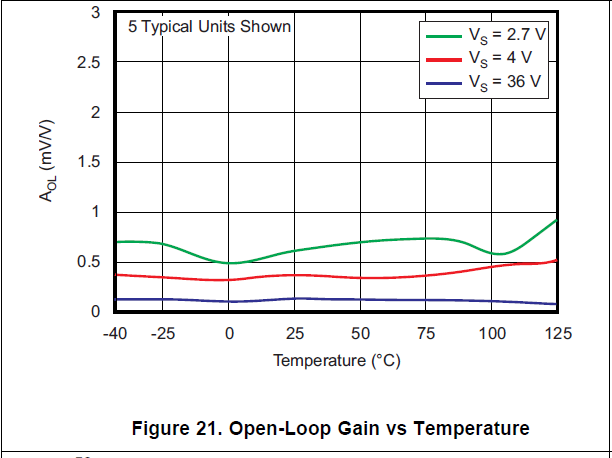Other Parts Discussed in Thread: TLV171-Q1
Hello,
I have a design with fairly large closed-loop gain where I want to use OPA171.
Upon checking open loop gain specification I noticed figure 21 which seems weired to me (3 curves shown but "5 typical units shown", suspicious unit , seemingly contradictive to specification in section 6.7). Also I noticed that the same graph is given for OPA171 and TLV171-Q1 who differ in their respective specification however.
Could you shed some light onto this and explain, how to interpret the figure?
Best Regards
Norman Werner



